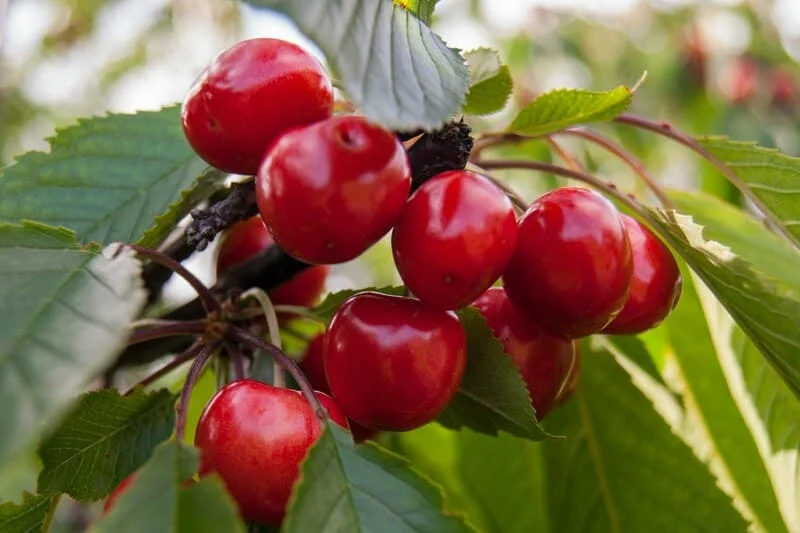Cherries are among the most delicate fruits in the agricultural industry, requiring careful handling to maintain their commercial value. In response to the challenges faced during packaging and transportation, specialists from the National Institute of Agricultural Technology (INTA) in Argentina have developed an electronic cherry. This innovative tool, equipped with sensors, records movements and impacts throughout the supply chain. By providing real-time data on handling conditions, this technology aims to reduce fruit damage, minimize losses, and increase profitability.
The Need for an Innovative Solution
In 2024 alone, Argentina exported 7,210 tons of cherries to Europe, the United States, Hong Kong, Singapore, and China, with an average price of $4 per kilogram, according to the Argentine Chamber of Integrated Cherry Producers (CAPCI). Maintaining this commercial value while improving export quality is a priority for the industry. The electronic cherry is designed to address this need by identifying areas where the fruit suffers impacts, allowing producers to optimize their processes.
According to Andrés Moltoni, a specialist at INTA’s Agro-Electronics Laboratory, the electronic cherry was developed to simulate the dimensions, weight, and surface hardness of real cherries. This ensures that the collected data accurately represents the conditions experienced by actual fruit during packaging and transportation.
The Impact of Pitting on the Cherry Industry
During packaging and transportation, cherries often experience impacts that lead to surface damage known as pitting. This reduces the fruit’s commercial value and contributes to losses. On average, 5% of cherries are lost due to pitting. Moltoni estimates that implementing this technology could reduce these losses by 50%, translating to a 2.5% recovery of exported cherries. Given the current export volume, this equates to 180,000 kilograms of cherries and approximately $720,000 in recovered value.
Liliana San Martino, a researcher at INTA Los Antiguos, Santa Cruz, further highlighted that losses due to pitting in packaging plants can range from 10% to 40%, based on recent INTA trials. Cherries are highly sensitive fruits, and the damage they sustain may not become visible until up to three weeks after impact, often when they have already reached their destination. This makes it crucial to minimize damage at the source.
How the Electronic Cherry Works
The electronic cherry is embedded with advanced technology to monitor impacts throughout the packaging and transportation process. It features a wireless Bluetooth transmitter, rechargeable lithium battery, and an accelerometer to detect movement and shock intensity. The collected data helps producers identify critical points in their operations where cherries are most vulnerable to damage.
San Martino emphasized that this data-driven approach enables precise adjustments to packaging machinery and handling procedures. “With the implementation of this technology, we have already seen tangible improvements in packaging plants that tested it. Specifically, calibrating conveyor machines to reduce fruit drops has proven highly effective,” she stated. Over four consecutive seasons, INTA has fine-tuned the calibration process using different cherry varieties alongside electronic sensors.
Global Interest and Future Prospects
The electronic cherry prototype has garnered significant interest from producers not only in Argentina but also in Chile, a major cherry-exporting country. The ability to pinpoint the exact moments and locations where cherries sustain damage provides a practical solution for reducing losses and improving quality control.
Although the technology is still in the prototype phase, the latest version incorporates key improvements. In addition to the Bluetooth transmitter and lithium battery, the updated design features an enhanced accelerometer with a wider scale to capture more precise impact data. The encapsulation has also been refined through 3D printing, with extensive testing of materials ranging from hard plastics to flexible coatings. This ensures the durability and accuracy of the device.
A Step Towards Smarter Cherry Production
Moltoni emphasized the broader implications of this innovation: “This technology provides concrete data that allows the sector to make informed decisions and implement necessary improvements in packaging plants. It is a key tool for evaluating cherry impacts, reducing waste, and minimizing economic losses.”
As the global demand for high-quality cherries continues to grow, implementing cutting-edge solutions like the electronic cherry will be essential for ensuring profitability and sustainability in the industry. By leveraging data-driven insights, producers can refine their handling processes, enhance fruit quality, and maintain Argentina’s strong position in the international cherry market.

